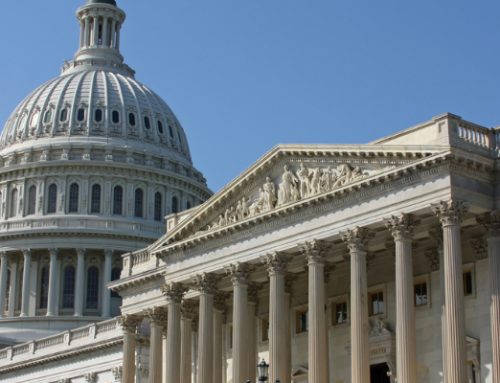Before the spate of tax law changes for COVID-19, the monumental shift in tax and legislative policies came from the Tax Cuts and Jobs Act. The overhaul to the tax code contained dozens of new regulations, one of them being the newly created Opportunity Zones. Real estate investments in certain designated communities were meant to spur economic growth. Years down the road, whether that’s been accomplished is a gray area.
A new bipartisan bill called the Opportunity Zones Transparency, Extension, and Improvement Act hopes to breathe new life into the once-promising tax deferral investment opportunity.
Background and Current Law
Opportunity Zones came about in 2017 with the passage of the Tax Cuts and Jobs Act (TJCA). A collective of real estate tax incentives in a Qualified Opportunity Fund (QOF) allow investors to buy and operate businesses in designated distressed census tracts, known as Opportunity Zones (OZs).
Under current law, QOFs work as follows.
- Capital gains invested in a QOF are deferred from federal taxation until December 31, 2026 (presuming continuous QOF investment).
- The initial basis of the QOF investment is zero. Cost basis increases by ten percent of the deferred gain if an investor sticks with the QOF for at least five years.
- A seven-year QOF investment would see a cost basis increase of 15 percent of deferred gain.
- If held in a QOF for ten years, the investor can elect to mark up their basis to fair market value, avoiding taxation of the appreciation of the investment.
As initially envisioned, QOF investments would create jobs in distressed communities and primarily in operating businesses rather than real estate. Critics argue that few jobs have been created and the transparency that was once sought has not been achieved. Instead, they say the overwhelming majority of investment has been in rental real estate, in relatively few census tracts, and in areas where growth was already occurring.
It’s also been hard for investors to realize all the benefits because of delayed guidance, changing deadlines, and overall changes to the program during budget reconciliation.
A Fresh Start for Opportunity Zones
To address those concerns and find a better solution for investors – who can no longer claim a basis increase – Congress introduced the Opportunity Zones Transparency, Extension, and Improvement Act (the Act) on April 7, 2022. The new Act has significant changes.
Reporting
If enacted, the new Act will require both QOFs and investors to report on information that would help officials monitor the program’s effectiveness. Reporting mechanisms were supposed to be included in the original bill, but the requirement was removed for the final version. Treasury would publish a report of the additional information.
Investors and QOFs would see penalties for willful non-compliance in this area. Proposed penalties could be $500 per day up to a total of no more than $10,000 ($50,000 for larger funds) or $2,500 per day up to a total of no more than $50,000 ($250,000 for larger funds).
Sunset Designated Tracts In Middle-Income Communities
Because the original designated communities were based on the 2010 Census, and the new Act is based on the 2020 Census, it’s possible that QOF designations could change. Some middle-income communities would see an early sunset of QOF eligibility. Ending the OZ designation would happen in census tracts where the median family income exceeds 130 percent of the national average based on the 2020 census.
For these middle-income QOZs, no additional investments will be permitted, though states would be allowed to appeal, sunset other zones, and replace ineligible zones with other low-income tracts.
There would be an exception for tracts with a poverty rate of at least 30 percent for non-student populations. Existing investments in middle-income communities would be grandfathered into the new rule.
A listing of the affected QOZs will be published within 12 months after the Act passes. After that, state governors can nominate new replacement QOZs or appeal designation.
Partnerships as ‘Feeder’ Funds
Partnerships could elect to organize as a ‘qualified feeder fund’ to invest in smaller QOFs. This would open the opportunity for larger investors to get involved in smaller projects. Such an arrangement has been prohibited under current law.
Add Funds to Promote QOFs
The new Act would create a $1 billion fund from which states and communities could draw funds to promote QOFs projects and businesses. Eligible expenses would include technical assistance, capacity building, and financing support.
Adjusted Cost Basis and Extended Deferral Period
Finally, cost basis according to how long the investment is held would change.
For investments made by December 31, 2022, and held for at least six years, cost basis is increased by 15 percent of the deferred gain.
For investments made by December 31, 2023, and held for at least five years, ten percent of deferred capital gains would be non-taxable.
This means the deferral period would be extended to December 31, 2028, with a lower threshold to meet the extra five percent step-up in basis. When the Treasury took an additional two years to issue final guidance, investors were essentially sidelined, so the longer deferral period is meant to make up for lost time and benefits.
Even though the Act is a bipartisan effort, it’s unlikely to pass before Midterm elections in the fall. As with any proposed legislation, what’s passed in the final version can and often does change. The outlook for a fresh start on Opportunity Zones is optimistic, and real estate investors – especially partnerships that previously may not have qualified – could potentially include this new tax strategy in their long-range plan.
To learn more about how Opportunity Zones and Qualified Opportunity Funds work, and which ones are available in Virginia, Maryland, Washington, D.C., and North Carolina, contact Construction and Real Estate Partner Ryan B. Paul, CPA.





